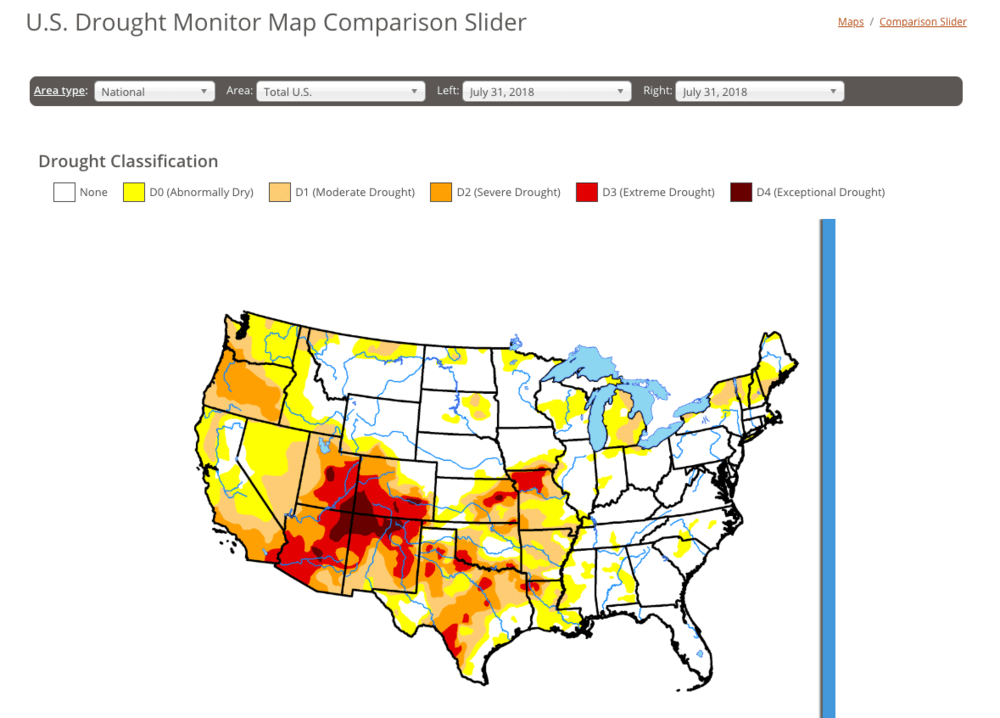Blame it on climate change, or just a plain ol’ heatwave, but Southern California’s major lemon growing region this month caused a loss of lemons and—wait for it—a squeeze in supplies. Wholesale prices are up about 40% or more in some markets. Lemon growers, for their part, have labeled the situation an “act of God,” or a Force Majeure this week, according to US Foods weekly report.
What happens when a supplier declares a contractual “act of God”? All volume commitments and pricing is voided. Consumers should expect delays and lack of fancy and choice grades, especially.
Terminal prices of fresh lemons in Los Angeles have risen about 40% or more since June 1, according to US Department of Ag data. The price for cartons of lemons (sizes 95-115) at wholesale was $36 to $39 on June 1 and as of last Friday was $52 to $55.
Weather forecasters are predicting temperatures will climb once again this week in parts of Ventura County, including Fillmore where highs reached 107 on Wednesday. The same region suffered scorched crops — both lemons and avocados — back in December due to the massive Thomas fire.

The result of the early July heatwave was more fruit than normal falling to the ground. The supply situation is compounded by a shift in the lemon market from processed products to the majority of the crop now being consumed fresh.
Though lemons tend to produce the most fruit in winter, the trees can have both flowers and ripe fruit at any time of the year. This tendency is somewhat dependent on temperature and other environmental conditions. The gentle temperature fluctuations in coastal areas supports a longer harvest season, while interior areas with a more pronounced seasonal variability tend to flower and fruit at distinct times of year.
Water supply also influences whether the harvest spreads throughout the year or is more concentrated in the winter. If soil moisture is consistent, lemons will blossom and produce some fruit throughout the year. During times of drought, the trees are unlikely to flower, resulting in longer gaps between periods of ripe fruit. Such are the very challenging conditions that California growers have faced over the past several months.
The lemon market has struggled especially since early June due to the very limited availability of fruit, specifically, smaller sized fruit 140s and smaller. Argentinian, Mexican, and Chilean imports were first expected to arrive to US Ports in late June, but even when they arrived, they did not fill demand expectations.
Sysco’s FreshPoint, a major produce distributor, suggested in a tweet last week that customers should switch to limes.

“A series of unusual weather events has devastated the domestic #lemon crop,” FreshPoint tweeted. “Lemons that are available will be poor quality, including excessive skin scarring and off sizes. We encourage substituting #limes when possible.”
The only problem with that strategy: the lime market is tight too, as the old crop of limes has dwindling supply. The new crop is not expected to be in full run until mid-September, and the market will be tight from now until then for both lemons and limes.











